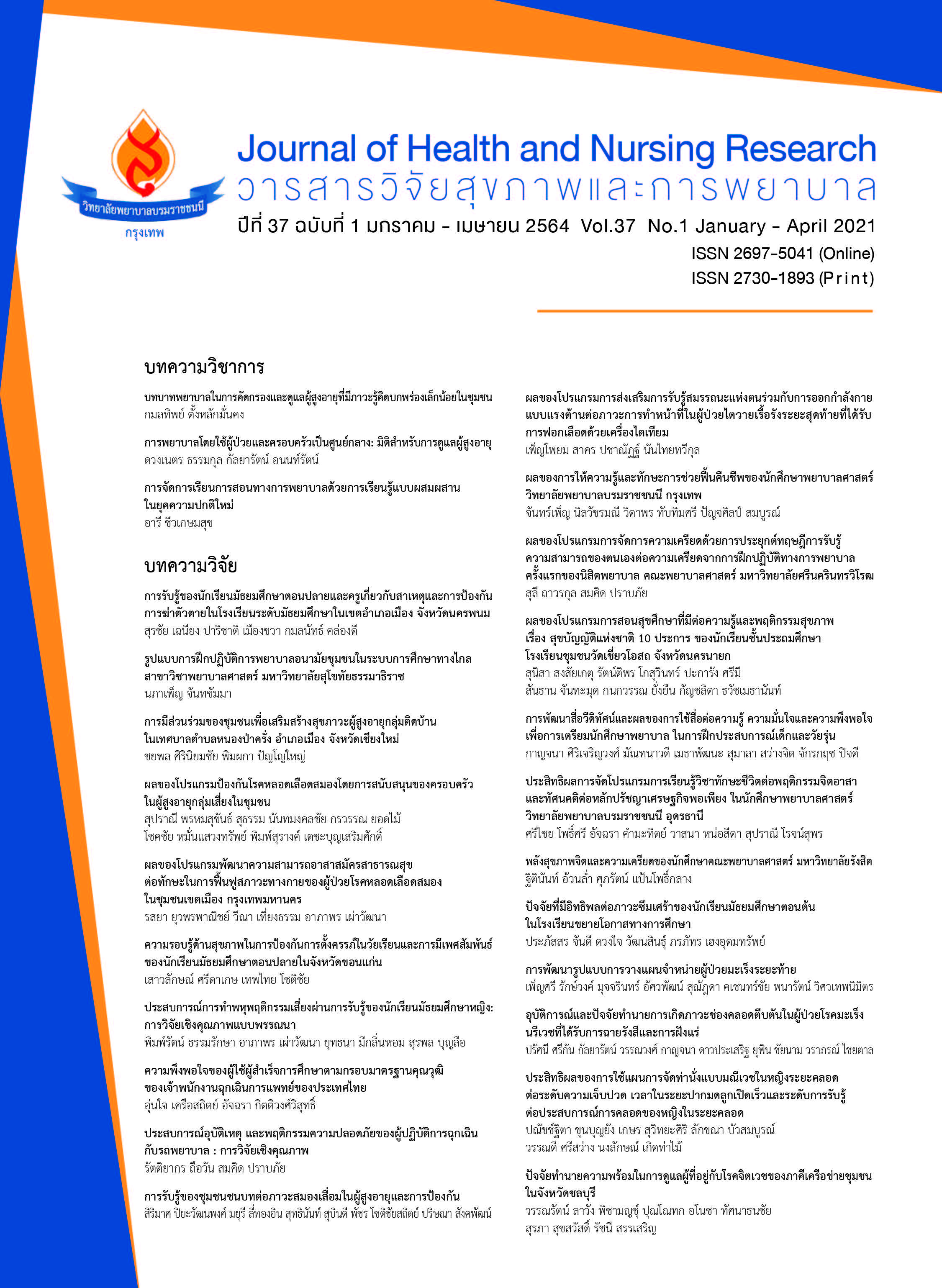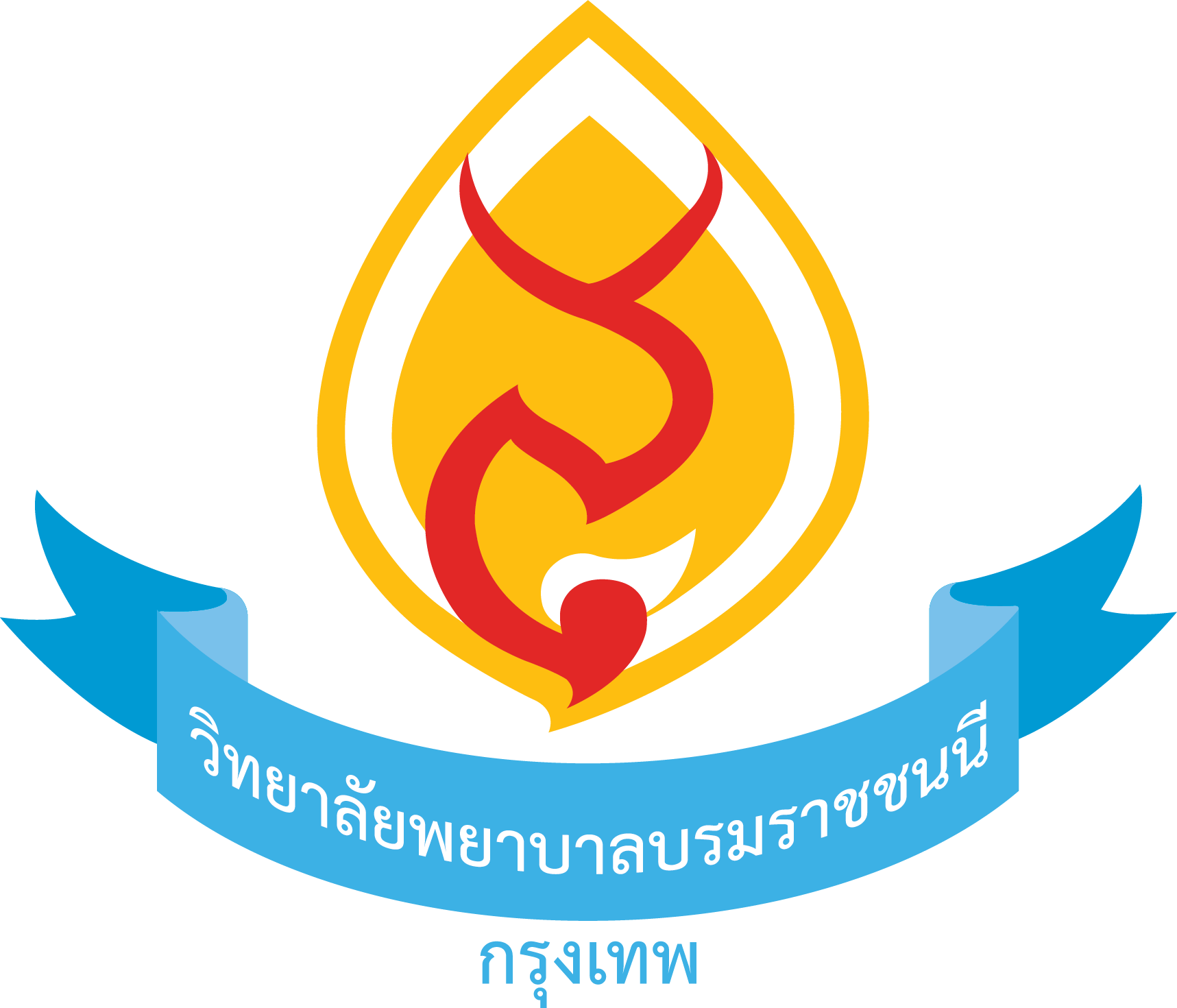Students and Teachers’ Perception on Cause and Suicide Prevention at Secondary School in Nakhon Phanom Province
Keywords:
qualitative research, cause of suicide, suicide prevention, secondary school students, Nakhon PhanomAbstract
Introduction: Adolescent suicidal behavior has become a major public health concern around the globe including Thailand, yet suicidal behavior is preventable. Research objectives: This descriptive qualitative study explored the perception of the students and teachers on cause of suicide, and prevention of suicide at secondary school in Nakhon Phanom Province, Thailand. Research methodology: A purposive sampling was used to recruit 20 adolescents for focus group discussions, and in-depth interviews were conducted with 7 school teachers, from June-October 2019. Data were analyzed using content analysis. Results: Findings of this study were two-folds: 1) the causes of adolescent suicide which could be summarized into 4 sub-categories; namely parents' expectations in education achievements and live, family problems, lack of problem-solving skill, bullying, and imitating behavior from the media; and 2) prevention of adolescent suicide, which had 4 sub-categories namely cultivating the self-resilience, peer support, family support, and school supportive environments. Conclusions: These findings provide a clear evidence for a mental health needs among students. Implications: Furthermore, psychiatric nursing and mental health personnel should play a critical role at school by developing a suicide prevention program. The program should involve peer, parents, school nurses, and school teachers. All stakeholders should recognize the school social context and emotional needs of the students.
Downloads
References
2. Thammaraksa P, Powwattana A. Whether or not multiple risk behaviors in Thai adolescents is preventable?. Journal of Boromarajonani College of Nursing, Bangkok. 2018;34(2), 173-88. (in Thai).
3. Chan YY, Lim KH, Teh CH, Kee CC, Ghazali SM, Lim KK, et al. Prevalence and risk factors associated with suicidal ideation among adolescents in Malaysia. Int J Adolesc Med Health. 2016;30(3): PMID: 27508957.
4. Hawton K, van Heeringen K. Suicide. Lancet 2009;373(9672):1372-81.
5. Hoven CW, Mandell DJ, Bertolote JM. Prevention of mental ill-health and suicide: Public health perspectives. Eur Psychiatry 2010;25(5):252-6.
6. World Health Organization. World Mental Health Day 2019: focus on suicide prevention [Internet]. Geneva: WHO; 2019 [cited 2019 Dec 5]. Available from: https://www.who.int/news-room/events/detail/2019/10/10/default-calendar/world mental-health-day-2019-focus-on-suicide-prevention.
7. National Action Alliance for Suicide Prevention (US). 2012 national strategy for suicide prevention: goals and objectives for action: a report of the US Surgeon General and of the National Action Alliance for Suicide Prevention. Washington D.C.: US Department of Health & Human Services (US); 2012
8. Chaveepojnkamjorn W, Pichainarong N. Current drinking and health-risk behaviors among male high school students in central Thailand. BMC public health. 2011;11(1):233. doi: 10.1186/1471-2458-11-233. ( in Thai).
9. Sam-Angsri N, Assanangkornchai S, Pattanasattayawong U, Muekthong A. Health-risk behaviors among high-school students in southern Thailand. J Med Assoc Thai. 2011;93(9):1075-83. ( in Thai).
10. Rungsang B, Chaimongkol N. The prevalence of suicidal ideation among high school students in Thailand and its potential related risk factors. Thai Pharmaceutical and Health Science Journal 2017;12(1):31-35. (in Thai).
11. Polpipatpong S, Chaimongkol N, Vatanasin S. Suicide ideation and Its associated factors. Journal of Faculty of Nursing, Burapha University 2018;26(1):40-9. (in Thai).
12. Mental Health Department, Ministry of Public Health. Suicide Prevention Project Report Khon Kean Psychiatric Hospital [internet]. Khon Kean: Khon Kean Psychiatric Hospital; 2562 [cited 2020 May 30]. Available from: https://www.dmh.go.th/report/suicide/
13. Lortrakul M. Suicide: management and Prevention. Bangkok: Ramathibodi Textbook Project. Faculty of Medicine, Mahidol University; 2553. (in Thai).
14. Chaniang S, Fongkaew W, Sethabouppha H, Lirtmunlikaporn S, Schepp KG. Development of a suicide prevention program for Thai adolescents. [Doctor of Philosophy in Nursing].Chiang Mai: Chiang Mai University; 2017.
15. Liu RT, Miller I. Life events and suicidal ideation and behavior: a systematic review. Clin Psychol Rev 2014;34(3):181-92.
16. Thanoi W, Phancharoenworakul K, Thompson EA, Panitrat R, Nityasuddhi D. Thai adolescent suicide risk behaviors: testing a model of negative life events, rumination, emotional distress, resilience and social support. Pac Rim Int J Nurs Res Thail 2010;14(3):187-202.
17. Ahmad N, Cheong SM, Ibrahim N, Rosman A. Suicidal ideation among Malaysian adolescents. Asia Pac J Public Health 2014;26 Suppl 5:63S-9S.
18. Litwiller BJ, Brausch AM. Cyber bullying and physical bullying in adolescent suicide: the role of violent behavior and substance use. J Youth Adolesc. 2013;42(5):675-84.
19. Kaewviengdach C, Hirunwatthanakul P. Factors associated with sexual risk behaviours among secondary school students in Nakhon Phanom Province. Journal of the Royal Thai Army Nurses, 2016;17(3):168-77. (in Thai).
20. Prabmeechai S, Rueangworaboon S. The effects of sex education learning program on sexual knowledge and satisfaction with the program of high school students. Srinagarind Med J 2017;32(3):263-8. (in Thai).
21. Somkumlung P, Kata W. Capacity assessment of family with adolescent childat Muang Nakhon Phanom Municipality, Nakhon Phanom Province. Journal of Sakon Nakhon Hospital. 2019; 22(1):28-39. (in Thai).
22. Chaniang S. Meuangkhwa P. Klongdee K. Factors Related to Suicide Risk Behaviors among Secondary School Students in Nakhon Phanom Province. Journal of the Police Nurses 2020;12(1):28-35. (in Thai).
23. Chaniang S, Fongkaew W, Sethabouppha H, Lirtmunlikaporn S, Schepp KG. Perceptions of adolescents, teachers and parents towards causes and prevention of suicide in secondary school students in Chiang Mai. Pac Rim Int J Nurs Res Thail 2019;23(1):47-60.
24. Sukhawaha S, Arunpongpaisal S, Rungreangkulkij S. Attempted suicide triggers in Thai adolescent perspectives. Arch Psychiatr Nurs 2016;30(3):334-41.
25. Lambert VA, Lambert CE. Qualitative descriptive research: An acceptable design. Pac Rim Int J Nurs Res Thail 2012;16(4):255-6.
26. Morse, JM. Qualitative nursing research: A contemporary dialogue. Newbury Park: Sage Publications;1991.
27. Lincoln, YS, Guba, EG. Naturalistic inquiry. Newbury Park: Sage Publications; 1985.
28. Miles MB, Huberman AM. Qualitative data analysis: An expanded sourcebook. Thousand Oaks: Sage Publications;1994.
Downloads
Published
How to Cite
Issue
Section
License
Article published Is the copyright of the Journal of Health and Nursing Research (Boromarajonani College of Nursing, Bangkok) Cannot be republished in other journals


















